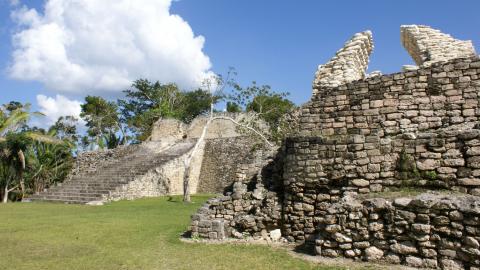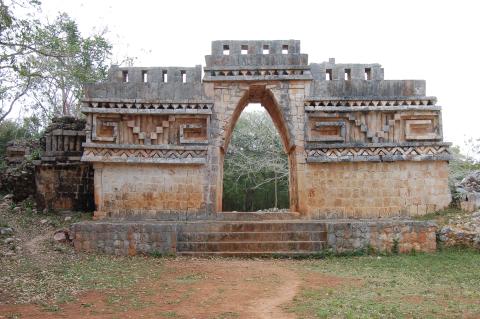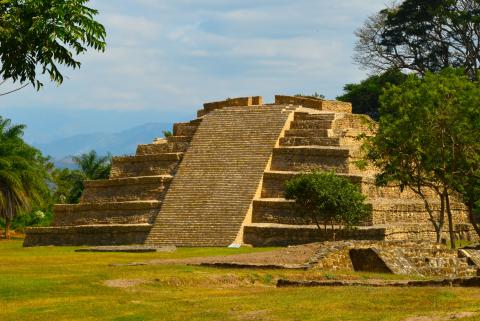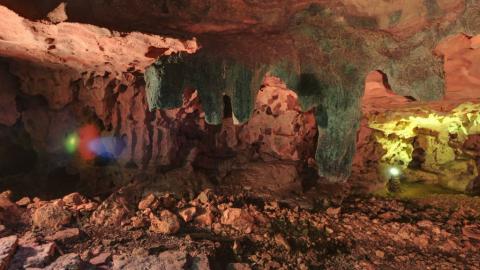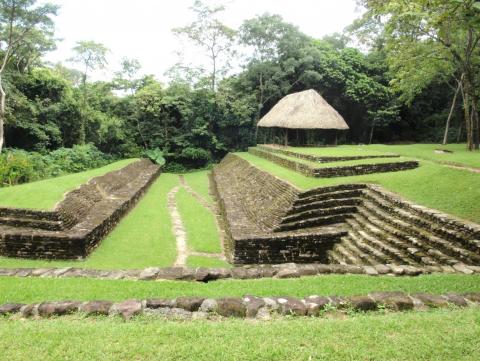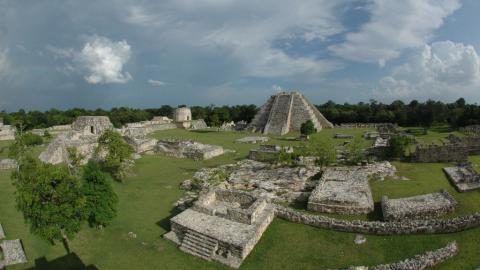
View PDFMostrando 73 - 84 de 134
Región cultural Maya
Kohunlich
This is the most visited site in Quintana Roo. It has stunning residential, civic and religious complexes surrounded by jungle. The Temple of the Masks is outstanding with figures of royal personages which still retain traces of red paint and whose attire bears celestial symbols.
Kohunlich
This is the most visited site in Quintana Roo. It has stunning residential, civic and religious complexes surrounded by jungle. The Temple of the Masks is outstanding with figures of royal personages which still retain traces of red paint and whose attire bears celestial symbols.
Labná
Although this is a small city, it houses three jewels: its beautiful Arch of richly carved stone; the Palace, whose facade has numerous masks of the god Chaac, and the Mirador (lookout point). It was declared a World Heritage Site together with Uxmal, Sayil and Xlapak, under the title of the Pre…
Labná
Although this is a small city, it houses three jewels: its beautiful Arch of richly carved stone; the Palace, whose facade has numerous masks of the god Chaac, and the Mirador (lookout point). It was declared a World Heritage Site together with Uxmal, Sayil and Xlapak, under the title of the Pre…
Lagartero
John Lloyd Stevens described it as “a wild place of incomparable beauty…” The great civic and religious center is located on the island of El Limonal (lemon grove) and the rest of the vestiges are dispersed on little islands and peninsulas in present-day Lagos de Colón.
Lagartero
John Lloyd Stevens described it as “a wild place of incomparable beauty…” The great civic and religious center is located on the island of El Limonal (lemon grove) and the rest of the vestiges are dispersed on little islands and peninsulas in present-day Lagos de Colón.
Loltún
These caves provide a fascinating experience. Galleries and natural formations, with stone paintings and carvings, allow visitors a vision of primitive people in the region, and the domestication of plants and animals, until they became sedentary. The site dates back to 9000 BC.
Loltún
These caves provide a fascinating experience. Galleries and natural formations, with stone paintings and carvings, allow visitors a vision of primitive people in the region, and the domestication of plants and animals, until they became sedentary. The site dates back to 9000 BC.
Malpasito
This site is characteristic of the Zoque culture, close to the Olmec and the Maya, but different. Thirteen hundred years ago its founders flattened the irregular terrain and formed artificial terraces on which to erect their delicate constructions, as well as producing fine pottery.
Malpasito
This site is characteristic of the Zoque culture, close to the Olmec and the Maya, but different. Thirteen hundred years ago its founders flattened the irregular terrain and formed artificial terraces on which to erect their delicate constructions, as well as producing fine pottery.
Mayapán
The last great city of the ancient Maya, walled, reminiscent of Chichen Itza once it had fallen. With a population of up to 12,000, founded 1,300 years ago, buildings with significant Maya-Toltec influence but with its own style, and an unexpected mural painting of great value.
Mayapán
The last great city of the ancient Maya, walled, reminiscent of Chichen Itza once it had fallen. With a population of up to 12,000, founded 1,300 years ago, buildings with significant Maya-Toltec influence but with its own style, and an unexpected mural painting of great value.

